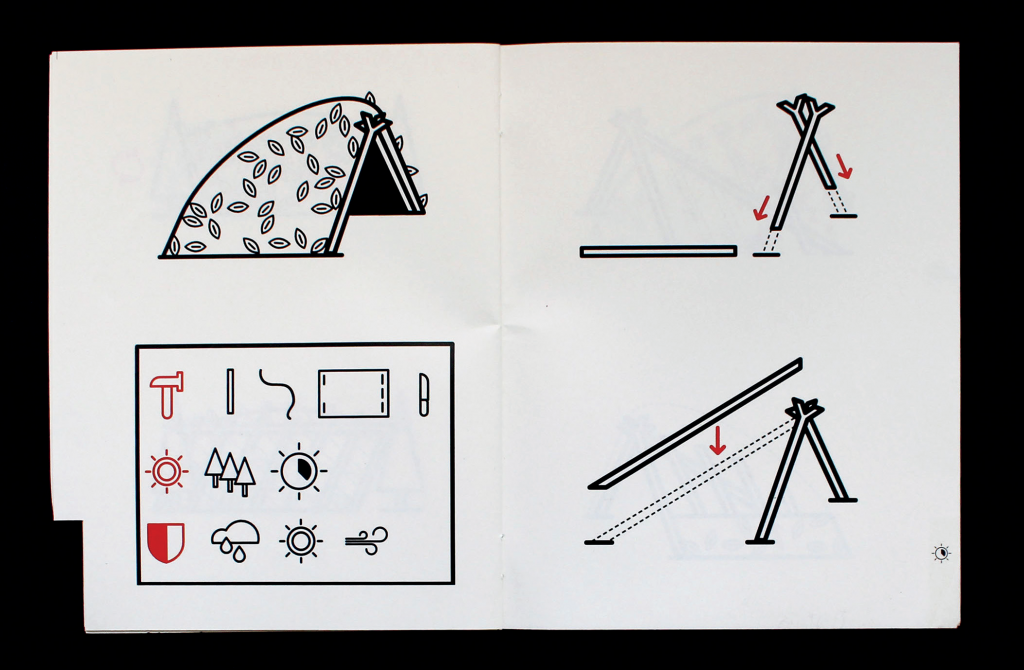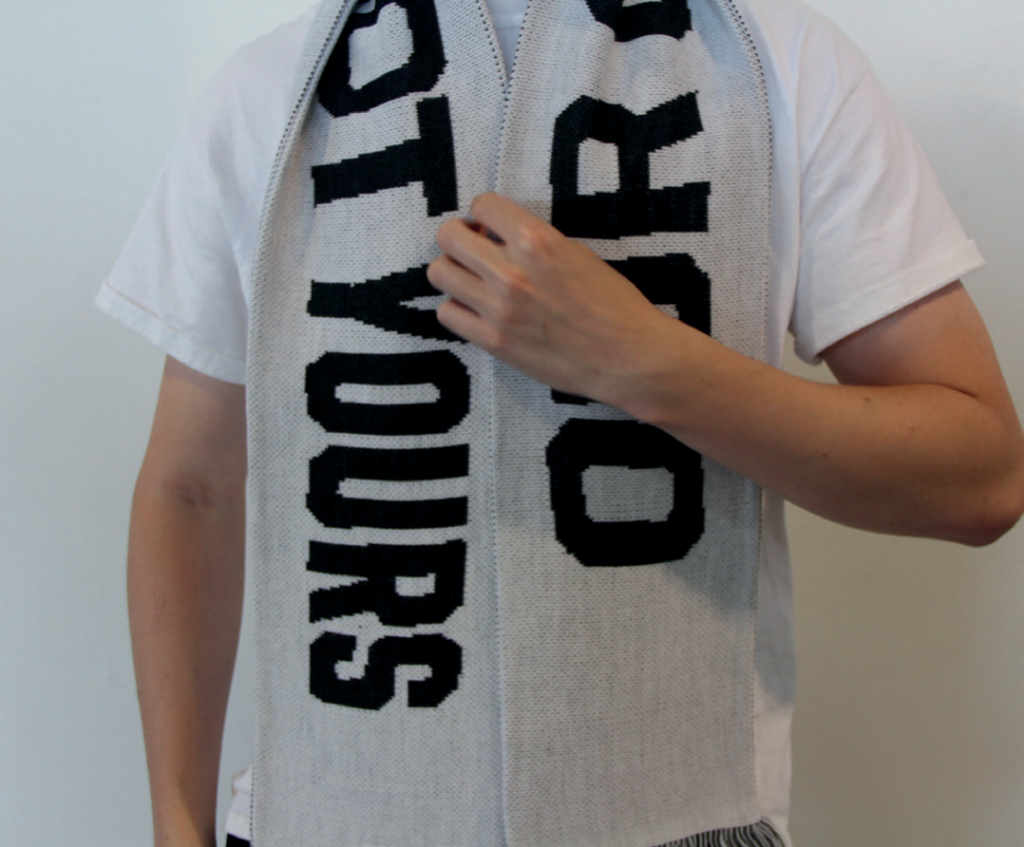What is a personal statement?
The UCAS personal statement is a 47 line (or 4,000 character) piece of writing that allows you to tell the universities and colleges you are applying to, why they should offer you a place on the course.
Writing a personal statement is regarded as one of the most difficult parts of the UCAS application form, it can be very hard to write about yourself, but it is an exciting opportunity to express and explain yourself in a way that is personal and not based around grades and educational achievement.
Why do universities want me to write a personal statement?
We are interested in you. Your exam grades are only a small part of who you are, and at Ravensbourne we are much more interested in what interests you personally, what drives you and makes you stand out from other people who are applying.
A good personal statement will indicate clearly to us whether you are suitable for Ravensbourne and the courses we offer.
In order to be successful you will need to convey your passion and enthusiasm for your course subject as well as demonstrate your suitability to the course.
Many of our courses are over subscribed.
Personal statements allow us to start our selection process before we have met the applicants.

Aims of my personal statement
When the admissions and subject tutors look at your personal statement, they are likely to be asking two main questions: 1. Do we want this student on this course? 2. Do we want this student at Ravensbourne?
In more detail this breaks down as:
- is the student suited to the course that they are applying for?
- does the student have the necessary qualifications and qualities for the course?
- is the student conscientious, hardworking and unlikely to drop out?
- will the student do their best and cope with the demands of the course?
- can the student work well under pressure?
- will the student be able to adjust to their new environment?
- what are their communication skills like?
- are they dedicated to this course and have they researched it well?
- do they have a genuine interest in the subject and a desire to learn more about it?

So how do I start?
The first step is to ask yourself some questions about what course you want to apply to and why.
- specific aspects of the courses that interest me
- examples of coursework I have completed
- practical work I have enjoyed
- books, articles, etc. I have read related to the subject area
- work experience or voluntary work in this area
- personal experiences that lead to the decision to take this subject
- where I hope a degree in this subject will take me in the future
- experiences that show you I am a reliable and responsible person
- part-time job
- business enterprise
- community and charity work
- sixth form committee
- helping out at school events and open days
- Young Enterprise, World Challenge, Duke of Edinburgh award, Asdan Award, Debating societies, and what I have gained from these experiences
- Exhibitions you have attended.
My interests and skills
- what I like to do in my free time
- sport and leisure activities
- subjects I study that are not examined
- musical instrument(s) I play
- languages I speak
- prizes I have won or positions achieved in my interests
- attributes that make me interesting, special or unique.
The Progression Manager from Ravensbourne: ‘The strongest applicants are those who can link their extra-curricular activities to their proposed course of study.’
Hobbies and interests
Think about how your hobbies, interests and social activities demonstrate your skills and abilities. If there’s anything that relates to your course or to the skills needed to complete a higher education course, include it – the more evidence the better.
Your statement will be more convincing and personal if you write about why an experience, activity or interest makes you a good candidate for the course. Include enough additional information to make it interesting and to demonstrate your own interest.
Rather than making a statement such as ‘I enjoy competitive dancing’
try to provide context and show what you have learnt ‘I dance twice a week with a club that competes in local competitions, I have danced with the same dance group for 2 years. Competitive dancing requires good team working, an ability to support and work sympathetically with the other dancers, to rehearse, but be able to adapt as required.
I enjoy the social side of the club and take responsibility for organising the social activities and fundraising events. This gives me an opportunity to develop my organisational and planning skills. Fitting in all these activities while keeping up with my academic studies demands good time management and I think I do that very well.’
Work experience
Include details of jobs, placements, work experience or voluntary work, particularly if it’s relevant to your chosen course(s). Try to link any experience to skills or qualities mentioned in the Entry Profiles.
For example, rather than just saying ‘I spent two years working in Topshop. I enjoyed speaking to customers and learning about what they buy.’
You could say ‘I spent two years managing customer enquiries at Topshop. I learnt how to interact with customers and to understand what people want to wear and buy. The experience highlighted the importance of understanding my market when designing clothes and taught me how to work within a team towards a common purpose, and I would like to develop this skill further by studying a degree in Fashion design.’

What do I say about the course I want to do?
Saying why you want to take your course is the most important part of your personal statement.
You can have perfect grades, interesting extra curricular activities and be a really great person, but if admissions staff feel you aren’t committed to your course, you won’t get a place. You need to convince them that you are committed to it.
Write down as many reasons you want to do your chosen course as you can, and then edit it to pick the best.
UCAS has published some of the reasons given by admissions staff for rejecting applicants:
- your personal statement did not show sufficient understanding, relevance or knowledge about the course you are applying for.
- you failed to demonstrate sufficient knowledge and interest in the subject in your personal statement.
- there is a lot of competition for places on this course and your personal statement and experience was not as strong as other applicants this year.
Do
- produce a mindmap and rough drafts and notes before you write the final statement
- show the rough draft to your friends, family and teachers and listen to their feedback
- be enthusiastic – the more upbeat you are the better your chance of gaining a place.
- look at our website for clues and information about the type of student we are looking for
- check spelling and grammar, then check it again
- make sure you have included everything you wanted to
- make sure that you have shown your suitability for the course through explaining what you have experienced up to this point
- read some personal statements and consider what makes them successful.

Don’t
- don’t copy someone else’s statement, or even parts of it
- use any words that you don’t understand, you don’t normally use, or need to look up. It could make you look pretentious and you may make mistakes with word context
- lie. Interviewers may ask you to elaborate in your interview and might catch you out.
- don’t rely on spell checker
- don’t leave it until the last minute.
- Your future is important and you should give yourself the best chance of success
- don’t use quotes; everyone uses the same ones and it is seen as a ‘filler’ tactic
- don’t try to be funny or make jokes in the statement. People have different senses of humour and it could put someone off
- don’t start every sentence with I
- only put in hobbies and interests as a vehicle for exploring your strengths.
- If they are not relevant then leave them out
- don’t repeat things that have been covered by the rest of your application ie exam grades
- DON’T DON’T DON’T use the phrases, ‘ever since I was young…’ or ‘if you let me on your course I will work harder than anyone…’ or variations of these.



How should I structure my statement
Most statements are written in an essay format, but you don’t have to do yours like this. We don’t recommend you write it as one large block of text. Even though you can fit more words in, this just makes it hard to read.
When faced with a wall of text people tend to skim read, where there are spacings people take pauses and it gives them time to digest what you are trying to say.
You could however use headings rather than write in an essay style. Not many personal statements are written like this but if you think yours would work better like this, then go ahead; it would also make yours stand out.
As a rough guide spend half the statement talking about the course and why you want to take it, and spend the other half writing about yourself and your own abilities.
Another approach is to split up your notes into a few categories and write a paragraph on each category.

For example:
§ 1
Introduction to the subject, the aspects you’re interested in and why
§ 2
What you have done related to the subject that isn’t already on your UCAS form
§ 3+4
Work experience placements and relevant activities at school
§ 5
Your interests outside of school, particularly those that are related to your course and show you are a responsible and reliable person
§ 6
Your goal of attending university and a memorable closing comment
Again, this is only a guideline – depending on yourself and your course you may want to change things.
The last option is to simply find a statement you like and use it as a template. You can write the first draft of your personal statement using the same structure, being careful that you don’t use any of the exact language. Spend most of your time on the start and finish of the personal statement.
A good opening will grab the readers’ attention and cause them to read the statement properly, rather than just scanning it. A good conclusion will mean the reader remembers what you wrote, and hopefully will recommend you.
It’s best to start with why you want to take your subject, and finish with why you want to go to university or what you want to do afterwards. There is no requirement that you fill the entire space; it’s better to have a short and well written personal statement than a long and irrelevant one.


I’ve written the first draft of my personal statement – now what?
- at this point your statement will probably be too long and disjointed, don’t worry, you can correct these things later on.
- read through what you’ve written slowly and try to read it from someone else’s point of view.
- make sure it’s easy to read and not confusing. Have you said everything you want to say without under or over-selling yourself?
- if you are confused by reading your own personal statement, it is likely anyone else reading it will be too (including the admissions tutors!).
- get other people to read it. Ask your family, friends, teachers and anyone else who you think will be able to give you a good opinion.
- as well as checking for spelling and grammar mistakes, they will be able to tell you if they think there are some things you may have missed out.
- also show it to your head of year at school or career adviser, as people like this will have seen a lot of statements and therefore know what a good personal statement looks like.
- before making any changes, save a copy of your original statement so you can go back to it if you need too.
- keep making changes, showing people your statement, and making more changes – it’s not unusual for people to have done 10-20 drafts (though many do far fewer) before they are completely happy with their statement.
- once you’ve got a personal statement that reads well, and you are happy with it, it’s time to look at the size of it.
‘The presentation of the personal statement is of critical importance to demonstrate use of English language and grammar at a standard suitable for entry to higher education.’ Admissions at Ravensbourne.


Now for the technical bit…
Although you only have 47 lines in which to write your personal statement, there are still some tricks to get more words in. However, you should take care using them, as they will only clear you through the automatic preview – you can’t tell how it will appear to the admissions tutors. (see link on tips to put in more words).
Word, character and line limits
Firstly remember, there is no word limit – instead you’re concentrating on a character limit (4,000 characters including spaces) and a line limit (47). Both of these must be satisfied to allow you to save your personal statement. Checking you’re within the character limit is easy – just use the ‘word count’ tool on your word processor, which should show you how many characters you have used.
The line limit is more difficult, as the length of the lines is predetermined – any lines longer than 93 characters (including spaces) are wrapped onto the next line. You can check you don’t go over the line limit using a word processor that shows the cursor position (the upright bar showing where you’re typing) and creating a new line after you’ve typed 93 characters. If you’re doing this make sure your word processor doesn’t wrap lines automatically before this.
Other things to remember
No formatting of any type is allowed in your personal statement, except using capital letters – so any bold, italic, or underlined words will disappear in the preview.
Tabs and multiple spaces will be condensed to a single space, so it is no longer possible to indent lines. Single spaces at the beginning of lines will also be removed.
You have a very limited set of ‘special characters’ to use along with all the upper and lowercase letter and numbers. You can use the following symbols:
!”£$%^&()_+’ |/ ,.;:’@#~[]?-=
Common symbols not allowed are €, long dashes (–) and the special quote characters “ ‘ ’ ” which will simply be removed from your statement. So remember to replace long dashes with – and quotes with “ and ‘.
Some of these problems stem from Microsoft Word’s autoformat feature, so you might want to turn if off before starting your personal statement. Backslashes () are also not allowed but will be replaced with forward slashes (/) and curly brackets will be replaced with normal ones.
Further information and guidance
ucas.ac.uk/students/applying/howtoapply/personalstatement
